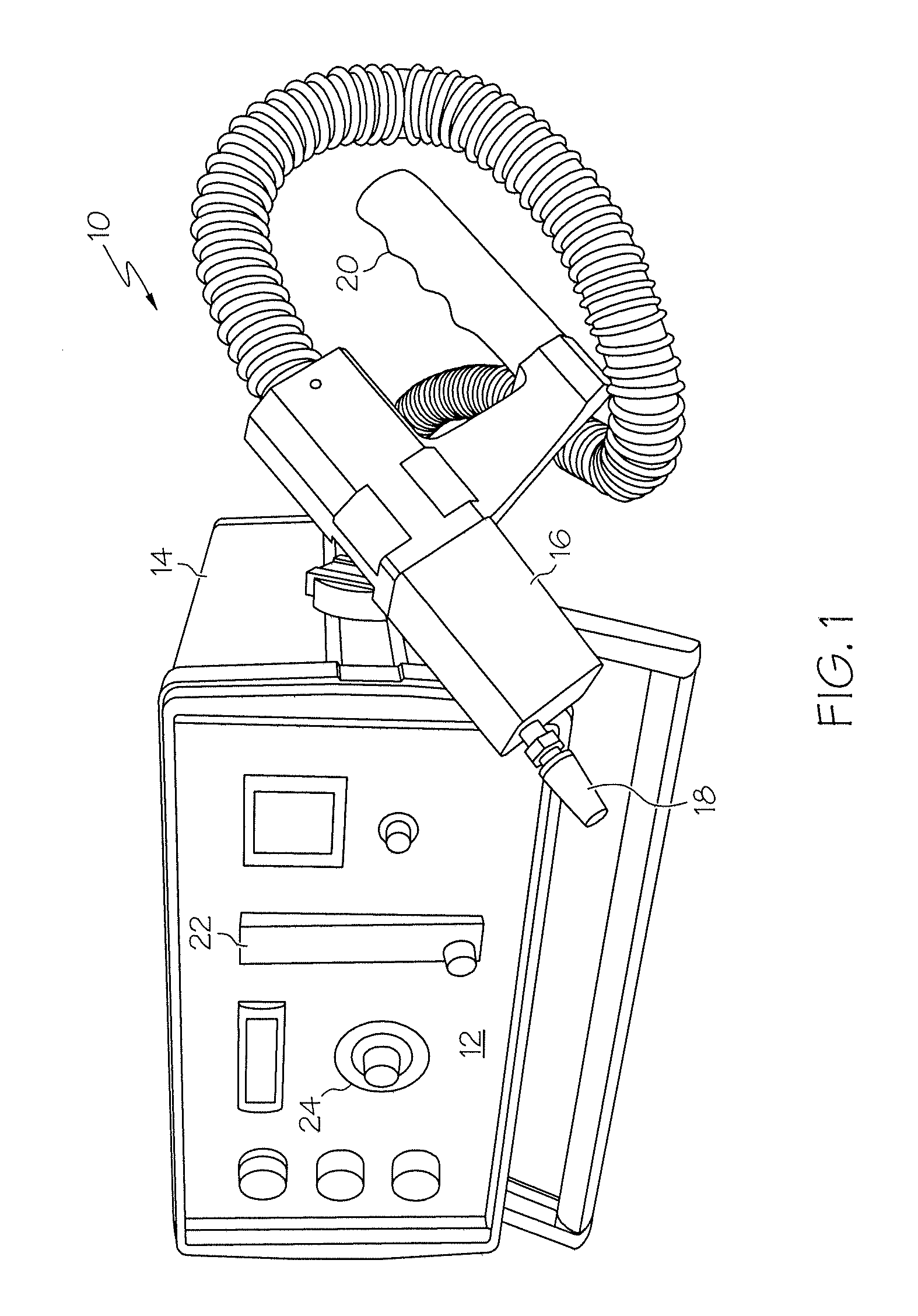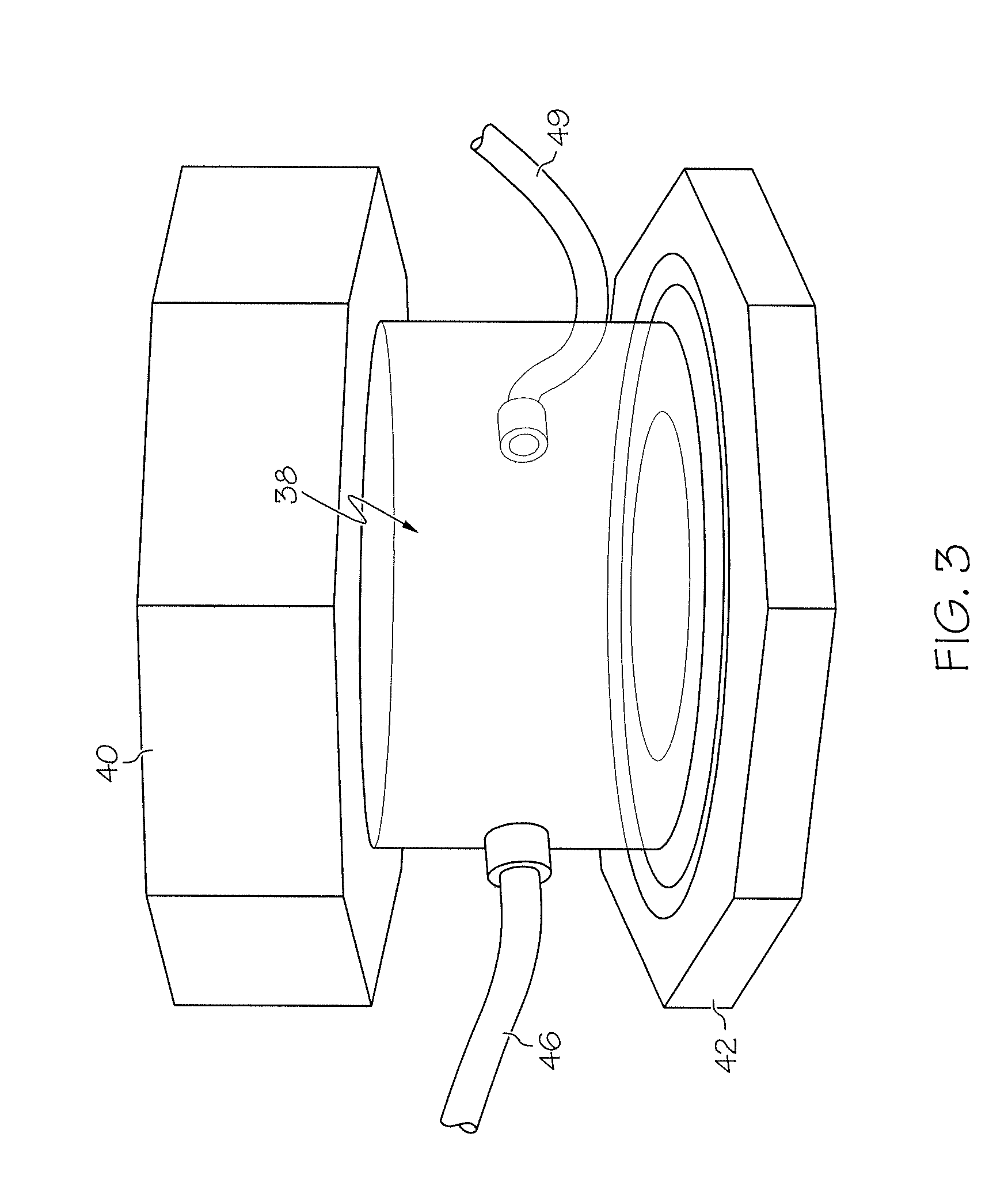Lens molds having atmospheric plasma coatings thereon
a technology of atmospheric plasma and lens molds, which is applied in the field of lens molds having atmospheric plasma coatings thereon, can solve the problems of reducing production yield, affecting the quality of contact lenses, so as to reduce the separation force of molds and increase the hydrophobicity.
- Summary
- Abstract
- Description
- Claims
- Application Information
AI Technical Summary
Benefits of technology
Problems solved by technology
Method used
Image
Examples
example 1
Coating on Molds
[0054]A Tetraethoxysilane (TEOS) bubbler is purchased from Gelest and connected to the atmospheric plasma system. Reusable glass molds similar to the molds shown in FIGS. 1-6 in U.S. Pat. Nos. 7,384,590 and 7,387,759 (FIGS. 1-6) are coated. The plasma-treated (coated) molding surfaces of glass molds have a contact angle of about 65 degrees, as compared to less than about 10 degrees for the non-plasma-treated (coated) molding surfaces of glass molds. The coating on the glass molds is tested for its ability to help to minimize the mode separation force, when using a silicone hydrogel lens formulation that does not contain mold release agent.
[0055]When using the coated molds to make lenses from silicone hydrogel lens formulations described in Examples 6 and 7 of WO2010071691 (herein incorporated by reference in its entirety), without mold release agent, the mold separation force is very low (in the low 20s as compared to more than 100 for uncoated molds). No star tears ...
example 2
Package Shell Treatment by Atmospheric Plasma
[0056]Polypropylene (PP) package shells are treated with atmospheric argon plasma and the surface wettability of the treated shells is evaluated by using Acudyne test. The plasma set-up includes a Tri-Star plasma generator (PT-2000P) and a ¼ inch plastic nozzle. Distance between shell and plasma nozzle is adjusted to 1 mm or 3 mm. Plasma intensity tested ranges from 60% to 90% or to 99%. Ar flow rates: 30, 40, and 50 SCFH. O2 flow rates: 8. Treatment times: 4 sec, 10 or 30 sec
[0057]After plasma treatment, the wettability of the shell surface increase as indicated by a decrease of surface tension. This is tested by using Accudyne solutions with different surface tension (35, 40, 45, 50 and 60 dyne). The Accudyne solution would spread on a treated surface with similar or lower surface tension and would bead up on a treated surface of higher surface tension. Significant improvement in wettability is obtained when shells are treated, for exam...
PUM
| Property | Measurement | Unit |
|---|---|---|
| water contact angle | aaaaa | aaaaa |
| water contact angle | aaaaa | aaaaa |
| water contact angle | aaaaa | aaaaa |
Abstract
Description
Claims
Application Information
 Login to View More
Login to View More - R&D
- Intellectual Property
- Life Sciences
- Materials
- Tech Scout
- Unparalleled Data Quality
- Higher Quality Content
- 60% Fewer Hallucinations
Browse by: Latest US Patents, China's latest patents, Technical Efficacy Thesaurus, Application Domain, Technology Topic, Popular Technical Reports.
© 2025 PatSnap. All rights reserved.Legal|Privacy policy|Modern Slavery Act Transparency Statement|Sitemap|About US| Contact US: help@patsnap.com



